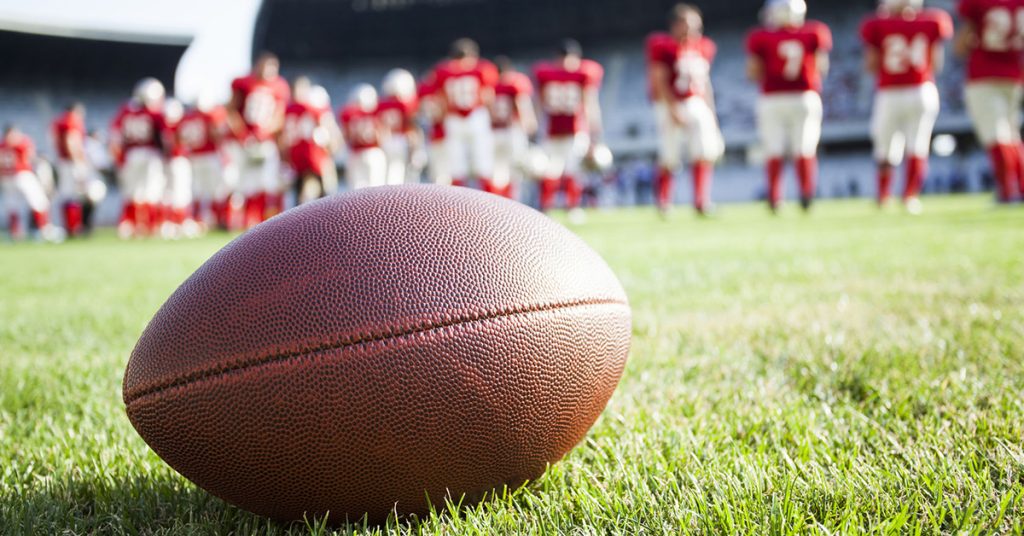Posts Tagged ‘concussions’
Massachusetts Concussion Legislation Would Ban Students In Grade 7 or Younger from Playing Football
Should students have to wait until they finish 7th grade to play football in Massachusetts? Lawmakers are being asked to consider legislation to delay the start of play to protect players from concussions.
“An Act for No Organized Head Impacts to Schoolchildren,” has been filed by State representatives Paul A. Schmid III (D-8th Bristol) and Bradley H. Jones Jr. (R-20th Middlesex). The legislation would ban children in 7th grade or younger from playing or practicing any form of organized tackle football. Schools would be held accountable and face fines for violations:
- $2,000 for each violation
- $5,000 for subsequent violations
- $10,000 when serious physical harm result to participants
Children would be allowed to play flag football or any form of football which does not involve tackle play. The proposal does not include any other sport.
Causes of Concussions
The Centers for Disease Control and Prevention (CDC) define a traumatic brain injury (TBI) as a disruption to the brain caused by a blow or jolt to the head. Concussions are considered a mild TBI, which can result in a brief change of mental alertness or consciousness. A severe TBI can result in a longer period of unconsciousness or mental change.
Symptoms may not be immediately evident after a concussion, especially if the person or those around them are not familiar with the symptoms, which can include an inability to think clearly, memory problems, feeling dazed and mood, behavior or personality changes. Headaches, nausea and vomiting can also set in.
Beyond the sports field, falls are the leading cause of concussions, according to the CDC. Adults over age 65 and children under 14 are most likely to suffer a fall leading to a head injury. Car crashes are the third leading cause of concussions, followed by being struck in the head by an unspecified object, such as in a construction site accident or by violence.
Concussions can also happen on the sports field. Not every contact necessarily results in a concussion, but to identify injuries, Massachusetts and other states have already passed concussion education and training laws. Known as “return to play” laws, these require high school and middle school students to be examined by a medical professional before they can participate in sports again.
Research on Concussions and the Impact on Younger Football Players
New research shows there is a measurable impact when younger children play football. In a study of 26 football players – all age 12 – Wake Forest researchers found changes in the corpus callosum, which joins the two sides of the brain and integrates cognitive, motor and sensory functions. The players underwent MRIs to examine the changes prior to the three-month season and three months after the season concluded. They were compared to 22 other students who did not participate in contact sports.
Players who suffer a concussion need proper rest and treatment so they can properly heal and to reduce the chance for another injury. Researchers have documented this risk; one study found high school and college students who sustained concussions were four to six times more likely to suffer a second injury (Source: McGill University in Montreal).
Concussion Legislation Filed in Other States
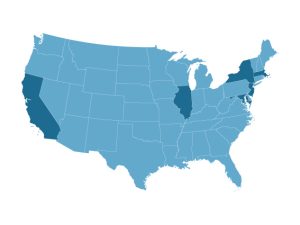
Lawmakers in Massachusetts and five other states have proposed banning tackle football for children younger than 12 or for those in seventh grade or younger. Data from Shape America.
Massachusetts isn’t taking the field alone on concussions. At least five other states are also debating tackle football bans for children under age 12. These states include Illinois, California, Maryland, New York and New Jersey, according to Boston.com. But none of the proposals are on track to reach state governors.
All 50 states already have “return to play” laws aimed at reducing youth sports-related concussions, according to the National Conference of State Legislatures. Washington state was the first to pass such a law in 2009. By 2015, every other state had enacted a similar law.
In most states, these laws mandate concussion awareness training and education to prevent concussions among student athletes. According to Shape America, 48 states require students suspected of having concussions to sit out at least 24 hours.
Arizona and South Carolina allow students back on the field the same day with a doctor’s approval.
Passed in July 2010, the Massachusetts concussion law requires parents, volunteers, coaches and school nurses to receive specialized concussion awareness training. This is to help them recognize concussion symptoms and help students receive treatment as soon as possible.
As in other states, the Massachusetts law requires medical clearance before students can return to sports. Schools are then required to maintain detailed record-keeping related to a student’s injury and progress in the classroom and on the field. The law is M.G.L. ch.111 §222. The Code of Massachusetts Regulations is 105 CMR 201.000.
All middle and high schools which offer sports through the Massachusetts Interscholastic Athletic Association (MIAA) must follow the concussion safety law.
More NFL Players are Self Reporting Concussion Symptoms
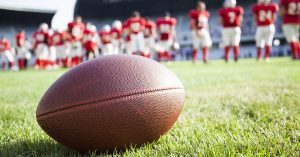 Professional football players face a high risk for concussions, far greater than most of us. But Rob Gronkowski’s concussion a few weeks ago was a reminder that concussions can happen when we least expect them, even in the middle of a big game. And when they do, the game must stop.
Professional football players face a high risk for concussions, far greater than most of us. But Rob Gronkowski’s concussion a few weeks ago was a reminder that concussions can happen when we least expect them, even in the middle of a big game. And when they do, the game must stop.
Much has changed over the past decade, as hundreds of former NFL players have sued over head injuries. Every state now has a concussion protocol for student athletes. In Massachusetts, students, coaches and parents are now trained to recognize concussion symptoms and how to respond. But others should also be aware of the risks. Beyond the playing field, concussions can happen in car accidents, construction accidents, falls and other situations.
Concussions are a mild Traumatic Brain Injury (TBI) which are often caused by an impact to the head. Concussions can be hard to recognize at first, with some initial symptoms mirroring the flu.
According to the Centers for Disease Control & Prevention (CDC), symptoms include:
- Headache or pressure in the head
- Temporary loss of consciousness
- Nausea and vomiting
- Fatigue and dizziness
- Confusion
- Slurred speech and/or a delayed response
Other symptoms may take a few hours or days to show, including poor concentration, memory problems, personality changes and sleep disturbances.
The NFL has specialists watch players for concussion symptoms. Last year brought a 16 percent increase in concussion reports. Yet there was one positive. Players self reported and initiated 28 percent of concussion evaluations in preseason and the regular season. This was up 9 percent. The NFL released these preliminary figures in January.
Though it was hard to see the Patriots fall in the Super Bowl, the increase in self-reported concussions is still a win. Here are some tips for concussion prevention beyond the football field:
Sports
Passed in 2010, Massachusetts’ concussion safety law requires students, parents, coaches and anyone involved in high school sports to be trained on how to identify the symptoms of a concussion. Students must be taken out of the game if they are injured and cleared by a doctor before they can return. Schools are required to report the number of concussions to the state.
This law provides a good foundation for educating the public about concussions and will protect students. If you are not a parent or student, you can find information about concussions online. The Mayo Clinic offers this resource.
Car Crashes
A high-impact traffic crash can cause head injuries and bruising you may not immediately see. Always receive medical treatment after a car accident. If you were traveling with a young child, it is essential. They may not be able to communicate the nature of their injuries. This is critical because car accidents are the leading cause of TBI-related deaths among children and young adults ages 5 to 24, according to the CDC.
Falls
Falls are the leading cause of TBI, with children and the elderly the most vulnerable, according to the CDC. Nearly half – 47 percent – of all individuals with TBI injuries who go to the emergency room, hospital or die have fallen.
There are a few steps you can take to prevent a concussion from being left untreated.
Adults who care for elderly parents can talk to them about the risks associated with falls and symptoms of a concussion.
First, let your parent know they should visit their medical doctor or an emergency room immediately after a fall. Then, do not assume they will. Many people are reluctant and unsure about going to a doctor. Let your parent know they can always call you and you will drive them.
Parents can protect young children by gating off staircases and laying down slip guards to prevent slips and falls. This is especially important for wooden staircases.
Stay informed about concussion policies at schools and daycare programs. Make sure your emergency contact information is up to date so the school can always reach you. On playgrounds, make sure your child is playing over soft material, not pavement. Give them an extra hand when venturing on new equipment for the first time. Steer them toward something else if they are not quite ready.
About Breakstone, White & Gluck
The Boston personal injury lawyers at Breakstone, White & Gluck specialize in representing clients in cases involving traumatic brain injuries. For a free legal consultation, contact our firm at 800-379-1244 or 617-723-7676 or use our contact form.
For Parents: Treat Your Child’s Sports Injuries Properly and Take Steps for Prevention
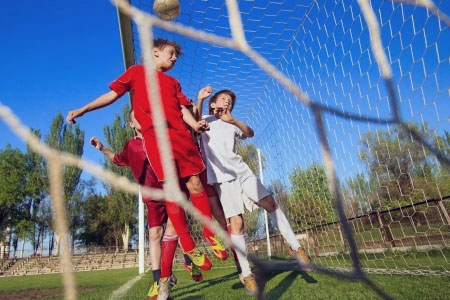 April is National Youth Sports Safety Month, an annual event sponsored by the Stop Sports Injuries organization.
April is National Youth Sports Safety Month, an annual event sponsored by the Stop Sports Injuries organization.
All parents of young athletes fear sports injuries – and there are a large number out there. A 2013 ESPN article reported that more than 21 million children and teens (between ages 6 and 17) are playing organized sports in the U.S.
But a large number of children and teens are also playing, then quitting because of injury. Some 29 percent of boys quit due to a health problem or injury and 27 percent of girls quit for the same reason, according to ESPN’s report.
A few other noteworthy figures:
- Roughly 2.7 million kids under age 20 were treated for sports and recreation injuries between 2001 and 2009.
- There was a 62 percent increase in the number of children under 19 who were treated for traumatic brain injuries (TBIs).
- Football concussions among children age 10 to 14 more than doubled from 2000 to 2010.
Sports programs are a big part of many children’s lives. The experiences will shape them into adulthood and should be enjoyed. But parents, children and coaches must also remember the rules of safety and learn the symptoms of a concussion and the proper ways to treat a head injury.
Symptoms of a concussion may include headaches, dizziness, trouble concentrating, amnesia surrounding the traumatic event, confusion or feeling in a fog, ringing in ears, nausea, vomiting, slurred speech, delayed response to questions and fatigue. Other symptoms may set in later, including memory and concentration problems, personality changes, sleep disturbances, psychological adjustments, depression and problems with taste and smell. When someone shows signs of these symptoms, they should receive immediate medical attention. But anytime a child suffers a concussion or head injury, they should be evaluated by a medical professional regardless of these symptoms.
Here are a few tips for parents:
Listen to Concussion Safety Information. Listen when your child’s coach talks about sports injuries and concussion prevention at the start of the season. In Massachusetts, middle school and high school sports coaches are required to provide training and prevention information related to concussions, under a state law passed in 2010.
Properly Warm Up. Make sure your child properly warms up, even if you drop them off late. Lack of proper warm ups make your child vulnerable to muscle and other injuries.
Football. Make sure your young football player properly warms up, takes proper precautions on those warm late August days to prevent overheating and is educated about symptoms of a concussion. This is important in all sports, but football players are especially vulnerable due to the high contact involved in the game.
Baseball and Softball. Make sure your baseball player properly warms up to protect against arm and shoulder injuries. Then make sure your child pays attention to the coaches and umpires and always focuses on the batter to avoid getting hit. Paying attention is more important than anything else in baseball because balls and bats are always moving quickly. Read more tips on our website.
Soccer. Players are vulnerable to head and other injuries from contact with the other team. Players are often running fast, with their full attention on the soccer ball, neglecting to see other players coming at the ball with just as much force. When someone gets hurt like this, they should step off the playing field and be evaluated by a coach or yourself.
For more safety tips, visit the Stop Sports Injuries website for more tips.
Read More
Study: 40 Percent of Americans Would Encourage Children Not to Play Football
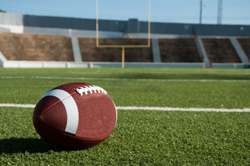 Last summer, the National Football League (NFL) announced it had reached a $765 million settlement with retired players who suffered from concussions and head injuries. But a federal judge has rejected the settlement and the debate about how to address the risk continues.
Last summer, the National Football League (NFL) announced it had reached a $765 million settlement with retired players who suffered from concussions and head injuries. But a federal judge has rejected the settlement and the debate about how to address the risk continues.
Even President Barack Obama has spoken: “I would not let my son play pro football,” he told The New Yorker magazine. But like many of us, he is a fan; he made the statement while watching the Miami Dolphins play the Carolina Panthers.
Recent surveys show many agree with the president, but many do not. In January, a NBC News/Wall Street Journal poll reported 40 percent of Americans would encourage their children to play another sport. Nearly 60 percent answered they would not discourage their children from playing organized football. Other findings include:
- Some 41 percent thought the NFL has taken meaningful action to reduce and prevent concussions; 20 percent disagreed.
- Roughly half of those surveyed with an annual salary of $75,000 or more said they would encourage their child to play another sport. On the other hand, only about 25 percent of those who earned $30,000 or less per would try to steer their child to another sport.
- One third of those who did not attend college said they would encourage their children not to play football, compared to 42 percent of college graduates and 57 percent of people with post-graduate degrees.
The NBC News/Wall Street Journal poll included 800 adults and had a margin of error plus or minus 3.46 percentage points.
Another Poll
In October, a HBO Real Sports/Marist poll reported a deeper divide. Out of more than 1,200 adults, one third said they would be less likely to allow their own son to play football if given the choice. But in the end, 85 percent said they would let their son play. Another 13 percent said they would not and two percent were unsure. (The study did not report on how respondents would feel about letting their daughters play.)
NFL Concussion Lawsuit
The NFL released figures in January showing the number of player concussions dropped 13 percent from 2012 to 2013. It has taken several steps to prevent concussions, including adding neurological consultants to the sidelines and replacing equipment.
But another notable part of the debate came from a recent NFL Nation survey of 320 players, just prior to the Super Bowl. The survey reported 85 percent would play in a Super Bowl with a concussion.
More than 4,500 retired players have filed concussion-related lawsuits against the NFL. The settlement must cover over 20,000 retired players for 65 years. The players accuse the league of long concealing the long-term risk of concussions from players, coaches and trainers. If an athlete suffers multiple concussions, it can lead to chronic traumatic encephalopathy (CTE), a progressive degenerate disease of the brain which is associated with memory loss, depression, paranoia, confusion and dementia.
Related:
Going the Distance, The New Yorker.
Poll Finds 40 Percent Would Sway Children Away from Football, Wall Street Journal.
Read More
Dietary Supplements Are Not a Cure for Concussions, FDA Says
 The Food and Drug Administration (FDA) is warning parents and others concerned about sports concussions that certain dietary supplement makers are making false claims.
The Food and Drug Administration (FDA) is warning parents and others concerned about sports concussions that certain dietary supplement makers are making false claims.
The FDA issued a Dec. 31 warning, advising consumers to avoid dietary supplements claiming to prevent or treat concussions and other traumatic brain injuries (TBI). The common claim is the dietary supplements promote faster healing times after a head injury. But the FDA said there is no scientific evidence to support this claim and it has the potential to cause serious injury. Athletes who return to play too soon because they believe they are cured risk long term health consequences. Repeated injuries which do not fully heal can cause brain swelling, permanent brain damage and long-term disability. They can also be fatal.
Over the past several years, many states have passed legislation to protect student athletes and professional sports leagues have made changes to protect players. In August, the National Football League (NFL) reached a $765 million settlement with 4,500 former players who suffered long-term injuries from concussions. Some of the money will help fund new research into chronic traumatic encephalopathy (CTE). This condition, which causes mental impairment, aggression and dementia, is linked to repeated hits to the head. But it can currently only be diagnosed after death.
In its recent update, the FDA also broadly warned consumers about all products labeled as dietary supplements which are marketed to cure, mitigate, treat or prevent disease. Dietary supplements are regulated differently than other food products and drugs.
There are over 85,000 supplements available today, but they require no approval before going to market. Under the Dietary Supplement Health and Educational Act, the manufacturer is responsible for ensuring a product is safe before going to market and the FDA can take action against any unsafe product after it starts being sold.
Dietary Supplement Companies
In this case, the FDA acted on a tip from the U.S. Department of Defense and conducted market surveillance. It found two companies making improper claims: PruTect Rx of Highlands Ranch, Colorado and Trinity Sports Group Inc. of Plano, Texas. It issued warning letters in September 2012 and both companies changed their websites and labeling.
But in December 2013, the FDA had to warn a third company, Star Scientific, Inc. for marketing a product called Anatabloc with claims to treat TBIs.
Consumer Warning
The FDA said consumers may come across these dietary supplements on the Internet, social media sites such as Facebook and Twitter and retail outlets. They often promise to heal TBIs with ingredients such as turmeric, an Indian spice, and high levels of omega-3 fatty acids derived from fish oil.
Related:
Can a Dietary Supplement Treat a Concussion? No., FDA Update.
Dietary Supplements, FDA.
Read More
Attitudes are Changing on Allowing Children to Play Football
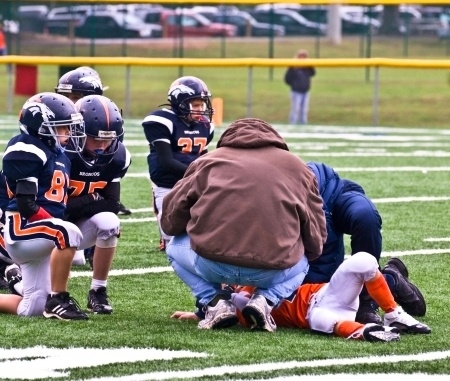 American attitudes about football are changing–even though the sport remains as popular as ever, more adults are re-thinking whether their children should risk head injuries by playing football.
American attitudes about football are changing–even though the sport remains as popular as ever, more adults are re-thinking whether their children should risk head injuries by playing football.
A new study by HBO Real Sports and Marist College Institute for Public Opinion surveyed more than 1,200 adults by phone in July and reports most have learned about the connection between concussions suffered while playing football and long-term brain injury. As a result, one in three adults say they would be less likely to allow their own son to play if given the choice.
Ultimately, 85 percent would let their son play, another 13 percent would not and 2 percent are unsure (The study did not report on how respondents would feel about letting their daughters play).
Seven out of 10 Americans think the benefits of playing outweigh the risk for injury. Also, 74 percent of Americans think football is a good way to build character and boys should be encouraged to play.
One notable point is Americans seem to be placing trust in coaches, parents and even players themselves. Some 30 percent say they are less concerned about the risk of long-term brain injury because these individuals are more informed now and can take greater precautions.
Concussion Prevention for Student Athletes
The majority of states have passed concussion prevention laws for high school athletes. Massachusetts passed a law in 2010, which requires students, parents and coaches to receive annual training on recognizing and treating concussions. Student athletes who are suspected of having suffered a concussion must be removed from play and receive a doctor’s medical clearance before returning. Schools must also report concussions to the state Department of Public Health. The law covers high school and middle school athletes in football, soccer and all other sports.
Today, 49 states have concussion prevention laws. The only exception is Mississippi. Washington was the first state to pass such legislation. In May 2009, the state passed the “Lystedt Law,” named after 13-year-old Zackery Lystedt suffered permanent brain injury in 2006 while playing in a junior high school football game after suffering a concussion.
NFL Settlement
In August, after the survey was conducted, the National Football League (NFL) agreed to settle a class-action lawsuit brought by more than 4,500 players and their families.
The settlement, the result of court-ordered mediation, includes $5 million for men with Alzheimer’s disease, $4 million for those diagnosed after death with a brain condition called chronic traumatic encephalopathy and $3 million for players with dementia. The suit alleged the league concealed what it knew about concussions among its players and failed to protect them from repeated hits in the game. Plaintiffs included Hall of Famer Tony Dorsett, Jim McMahon and the family of former New England Patriots’ start Junior Seau, who committed suicide in 2012.
Youth Football Enrollment Still Increasing
Pop Warner is the nation’s largest youth football league, serving over 250,000 children between the ages of 5 and 15. In recent years, the league has implemented its own safety rules. One rule limits the amount of contact players have to one third of practice time. Another is “when in doubt, sit it out,” when a concussion is suspected.
But enrollment has not decreased as public awareness has grown about concussions and football, officials recently told CNN. Enrollment has increased one percent annually for the past ten years, through 2012.
Related:
Youth Football Takes Hard Hit… One-Third of Americans Less Likely to Allow Son To Play Football because of Head Injury Risk, HBO Real Sports/Marist Poll.
Read More
Student Athlete Concussions Not Being Reported by Massachusetts High Schools
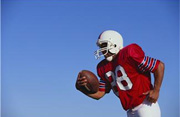
Only 31 percent of Massachusetts high schools and middle schools complied last year with a state law mandating reporting on student athlete concussions. State officials are hoping for greater compliance when new figures come due August 31.
In 2010, Massachusetts passed a law aimed at identifying and preventing concussions among student athletes. Under the law, 689 public and private schools were required to report data for the 2011-2012 academic year. However, only 213 schools submitted figures, and those figures showed that 3,450 students had suffered a head injury or suspected concussion in sports. The figures were recently reported in The Boston Globe.
To encourage reporting this year, the state has changed its form to make deadlines appear more prominent and provide definitions for data.
Massachusetts Law
A concussion is a mild traumatic brain injury caused by a force to the head, such as a fall or car accident. Symptoms typically include headaches, dizziness and memory problems. Left untreated, it can result in long-term brain impairment. In recent years, focus has been on preventing concussions in sports at every level, from the National Football League (NFL) to high schools down to Pop Warner football leagues.
Massachusetts is one of 47 states which have passed so-called “return to play” laws since 2009. The state of Washington passed the first concussion in sports law in 2009.
The Massachusetts sports concussion law requires students, parents and coaches to receive annual training to recognize the signs of a concussion. Students who sustain a concussion are required to sit out and obtain a doctor’s written permission to return to the game.
As a final step, schools must report figures to the Massachusetts Department of Public Health (DPH). Public schools and those subject to the rules of the Massachusetts Interscholastic Athletic Association (MIAA) must comply with the law.
Sports and recreational activities cause 3.8 million concussions each year in the United States, according to the Centers for Disease Control and Prevention (CDC). When an athlete suffers a concussion, they become at risk for suffering another one. Proper rest is important, and teenagers, along with older adults and young children, are believed to have longer recovery periods.
If you are the parent of a student athlete, summer is a good time to learn about the law. Ask your child’s coach when the school will hold concussion training sessions. You can also read a summary of the Massachusetts sports concussion law.
Related:
State revises concussion reporting after weak response from schools, The Boston Globe.
Head Injuries and Concussions Being Tracked Among Massachusetts Student Athletes
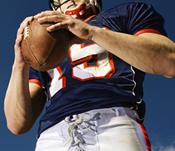 More than 330 students suffered head injuries and concussions last fall at 26 high schools in the region, according to a survey by The Boston Globe. This is the first time Massachusetts high schools and middle schools have been required to report injuries under a new state law.
More than 330 students suffered head injuries and concussions last fall at 26 high schools in the region, according to a survey by The Boston Globe. This is the first time Massachusetts high schools and middle schools have been required to report injuries under a new state law.
Football accounted for the majority of injuries, with 207 reported head injuries. Girls soccer followed with 85 head injuries, compared with 46 among boy soccer players.
Robert Cantu, a clinical professor of neurosurgery at Boston University School of Medicine, told theGlobe that football is the leading cause of head injuries among student high school athletes nationwide. He estimated that for every concussion recognized in football, 6 to 8 go unreported.
Concussions are a brain injury which can result when student athletes are struck in the head, collide with each other or engage in unsafe play. One recent study has documented how excessively heading the ball in soccer causes trauma to the brain as well. Symptoms can include headache, nausea, dizziness and confusion. Concussions have the best chance for recovery when given proper rest.
In 2010, Massachusetts passed a new law aimed at preventing concussions among high school athletes and protecting them from long-term injury. Since last September, students, parents and coaches have been required to receive annual training on recognizing and treating concussions; students who sustain concussions must obtain medical clearance before returning to play. Schools must report the number of injuries to the state Department of Public Health.
The 26 schools reported 338 head injuries. Marshfield and Newton South high schools reported the largest number of head injuries, followed by Lexington, Duxbury and Wakefield. Some coaches in these districts say the higher numbers reflect the community’s work to educate students and parents.
Some schools have gone beyond the requirements of the law and are utilizing ImPACT testing, a computerized cognitive test used to help evaluate whether a student is ready to return to the field. Some school districts are providing free physicals and staffing a doctor at every football game.
Finally, some athletic directors report their coaches are focusing on safe playing techniques while others are seeking new football helmets for players.
Related:
- Massachusetts Concussion Law
- Massachusetts Baseball Safety
- Massachusetts Interscholastic Athletic Association
Head Injury Guidelines Begin for Student-Athletes This Fall
 Student-athletes in Massachusetts will add a new drill to their warm ups this fall: concussion training aimed at preventing deaths, long-term injuries and disabilities.
Student-athletes in Massachusetts will add a new drill to their warm ups this fall: concussion training aimed at preventing deaths, long-term injuries and disabilities.
In 2010, the state Legislature passed a law requiring training and education for anyone involved in public middle school and high school sports. The Department of Public Health issued guidelines in June detailing the requirements, which include:
- Parents, players, coaches, school nurses, volunteers and others involved in sports must participate in annual state-approved training on how to recognize the symptoms of concussions.
- Schools have a few options for fulfilling the training requirement, including offering training materials at parent meetings and online trainings from the Centers for Disease Control and Prevention and the National Federation of State High School Associations.
- Student-athletes who suffer a head injury must be immediately removed from play and get medical clearance before returning.
- Student-athletes diagnosed with a concussion must have a written plan for returning to the game and the classroom.
- Student-athletes with a history of head injuries must file an injury report before every season.
Across the country, an estimated 136,000 student-athletes suffer concussions in high school sports each year.
Concussions are often referred to as a “metabolic cascade,” a series of changes in which the brain’s nerve cells stop functioning properly and blood flow slows down.
Concussions can occur when athletes collide with other players, equipment or the ground. It is important for people who suffer concussions to reduce physical and cognitive activity. When there is a subsequent injury, concussions can be fatal and result in long term injuries impacting memory, mood and impulses.
Concussions can be difficult to diagnose in part because the effects are not visible on imaging tools such as CT scans or MRIs.
Massachusetts schools are making changes as awareness about concussions increases throughout the sports and medical community. Starting this fall, Ivy League football players are limited to suiting up for two full-contact practices each week. The pending contract agreement will implement new guidelines for National Football League (NFL) players as well.
For more information, click to read this article in The Boston Globe.
Read More
Play It Safe and Avoid Injury This Baseball Season
Major League Baseball has opened its season and baseball players of all ages are stepping up to the plate across Massachusetts. Breakstone, White & Gluck wants you and your family to play it safe and enjoy the game.
Here, our Massachusetts personal injury lawyers offer safety tips on equipment, pitching and recovering from injuries:
Equipment and Field Safety
- Batting helmets must be worn whenever a player is waiting to bat, is at bat or is running the bases.
- Players should be instructed to have their attention focused on the batter, even when they are not actively involved in the game.
- Younger players should use balls that are partly rubberized to minimize the risk of injury.
Excessive Pitching
- Make sure pitchers follow league requirements for the number of innings they throw.
- You should also check the pitch count limits recommended by Youth USA Little League and the American Sports Medicine Institute.
How Coaches Can Identify Concussions
- The player appears dazed.
- The player is confused about their playing assignment.
- The player is unsure of the score or who the opponent is.
- The player moves clumsily or has poor balance.


